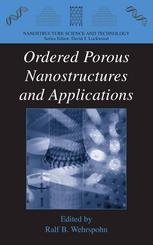

Most ebook files are in PDF format, so you can easily read them using various software such as Foxit Reader or directly on the Google Chrome browser.
Some ebook files are released by publishers in other formats such as .awz, .mobi, .epub, .fb2, etc. You may need to install specific software to read these formats on mobile/PC, such as Calibre.
Please read the tutorial at this link: https://ebookbell.com/faq
We offer FREE conversion to the popular formats you request; however, this may take some time. Therefore, right after payment, please email us, and we will try to provide the service as quickly as possible.
For some exceptional file formats or broken links (if any), please refrain from opening any disputes. Instead, email us first, and we will try to assist within a maximum of 6 hours.
EbookBell Team

0.0
0 reviewsOrdered porous nanostructures have emerged in the last ten years in different kinds of materials and with different pore diameters and interpore spacing. This book reviews in the first part which kinds of materials exhibit ordered nanopores and what are the physico-chemical reasons for it. In the second part, this book discusses the possible applications from photonic crystals via high-throughput screening to metallic and polymer-nanowire arrays and their use in the case of ferromagnetic wires as high-density magnetic storage medium.
This book reviews the most interesting materials on the market concerning self-ordering, including: macroporous silicon, porous alumina, MCM41 and photonic bandgap materials, which is one of the hottest topics in optics and nano-technology in the last five years, according to Science magazine. In computer applications, these structures enable significantly higher storage densities than are possible with thin film media. Moreover, these structures find uses in template fabrication for nanowire-arrays, high-throughput screening, lab-on-a-chip, ULSI circuitry for trenches and capacitors.